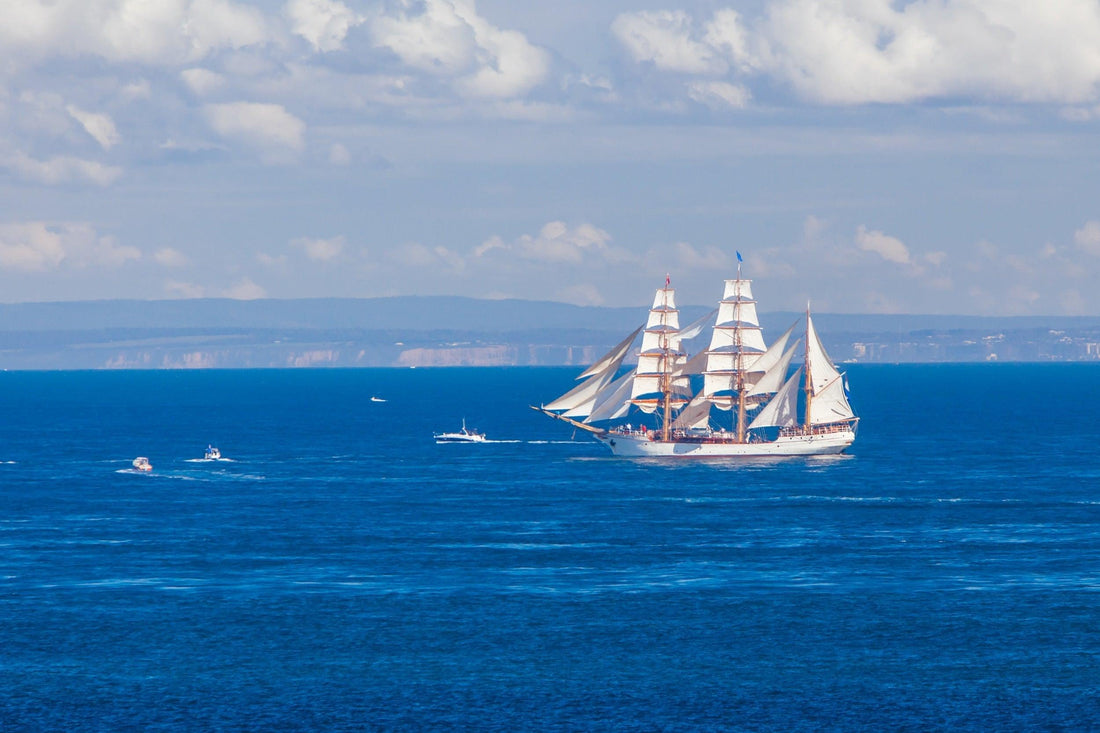
How the Age of Sail Transformed Hawaiʻi’s History
Share
How the Age of Sail Forever Changed Hawaiʻi—and Its Immigrant Legacy
Long before airplanes filled the skies over the islands, it was the great wooden ships of the Age of Sail that first connected Hawaiʻi to the world beyond the Pacific horizon.
While the Age of Discovery brought early explorers like Captain James Cook to Hawaiʻi in the late 18th century, it was the 19th-century expansion of global maritime commerce—known as the Age of Sail—that permanently reshaped the islands. As ships crisscrossed the Pacific bearing whalers, traders, missionaries, and immigrants, Hawaiʻi was transformed from an isolated Polynesian kingdom into a key nexus of trans-Pacific trade.
This era forged a new identity for Hawaiʻi: one grounded in multiculturalism, commerce, labor, and diplomacy. The Age of Sail brought opportunity and upheaval, laying the foundation for modern Hawaiʻi and forever altering the lives of those who would call the islands home.
The Rise of Honolulu and Lahaina as Port Towns
By the early 1800s, Honolulu on Oʻahu and Lahaina on Maui had become bustling port cities, thanks to their strategic mid-Pacific location. Sailing vessels—especially American and European whaling ships—frequently docked in these harbors for provisions, repairs, and rest.
Whaling peaked in the 1840s, with hundreds of ships arriving annually. The influx of sailors and merchants turned these quiet Hawaiian communities into global hubs, filled with taverns, supply shops, and trading houses.
The port towns weren't just stops—they were centers of cultural and economic transformation. Local chiefs (aliʻi) quickly recognized the value of trade, facilitating the introduction of Western tools, clothing, and weaponry, which in turn shifted political power and alliances throughout the islands.
Hawaiʻi as a Global Trading Post
The arrival of sailing ships heralded an era of unprecedented trade. Hawaiʻi began exporting:
- Sandalwood, prized in China
- Sugar and molasses, which would dominate the economy by the mid-1800s
- Salted fish and beef
- Bananas, pineapples, and coffee
In exchange, the islands imported manufactured goods, textiles, guns, and alcohol. The growing global appetite for Hawaiian exports turned the Kingdom of Hawaiʻi into an essential player in Pacific commerce.
To support this commerce, the Hawaiian monarchy—especially King Kamehameha III and King Kalākaua—encouraged treaties with global powers and invested in harbor improvements, shipyards, and diplomatic missions abroad.
Immigration in the Wake of Sail-Powered Trade
With new shipping routes came waves of migration, which would permanently alter Hawaiʻi’s demographic and cultural landscape. The Hawaiian Kingdom, recognizing its labor shortage due to declining Native Hawaiian populations (caused by introduced diseases), opened its borders to immigrant workers.
Many of these immigrants first arrived via sailing vessels, often contracted through foreign governments and commercial interests.
 Chinese Immigrants
Chinese Immigrants
- Began arriving in large numbers in the 1850s
- Worked in sugar plantations, opened restaurants and shops
- Brought customs like lunar festivals, language, and Taoist temples
 Japanese Immigrants
Japanese Immigrants
- First major group arrived in 1868 aboard the Scioto
- Established farming communities and Buddhist temples
- Became the largest immigrant group by the early 1900s
 Portuguese Immigrants
Portuguese Immigrants
- Many from the Azores and Madeira
- Brought bread-making (pão doce), ukulele, and dairy farming
- Sailed from Cape Verde and California ports aboard clippers and steamships
 Filipino Immigrants
Filipino Immigrants
- Later arrivals, but began with sailing cargo ships in early 20th century
- Became integral to plantation labor force and today form Hawaiʻi’s largest Asian ethnic group
These communities—first transported by ships of commerce—laid the groundwork for Hawaiʻi’s multicultural society.
The Role of Missionaries and Western Institutions
Many of the earliest American Protestant missionaries arrived by ship in the 1820s aboard vessels like the Thaddeus.
With them came printing presses, Western medicine, formal education systems, and Christian theology. Missionary families often intermarried with Hawaiian nobility and played major roles in the political and economic development of the islands.
Notably, institutions such as:
- Punahou School (1841)
- Kawaiahaʻo Church (1836)
- The first Hawaiian-language newspapers
...were all founded during the Age of Sail, helping to blend Native Hawaiian values with Western structures—sometimes harmoniously, sometimes contentiously.
Maritime Infrastructure and Hawaiʻi’s Naval Importance
The prominence of Hawaiʻi as a sailing hub led to growing interest from global powers. The development of dry docks, lighthouses, and customs stations made Honolulu especially important to American and British interests.
By the late 1800s, American influence intensified, culminating in the controversial establishment of Pearl Harbor as a naval base—originally used for coaling sailing vessels before transitioning to military steamships.
A Double-Edged Legacy
While the Age of Sail connected Hawaiʻi to the wider world and facilitated cultural exchange, it also:
- Accelerated land privatization (The 1848 Māhele drastically changed land ownership)
- Spread foreign diseases that devastated Native Hawaiian populations
- Paved the way for U.S. annexation and the overthrow of the Hawaiian monarchy in 1893
The cultural richness that emerged from immigrant communities came at the cost of displacement, environmental change, and cultural erosion for many Native Hawaiians.
Sailing into the Future
Today, echoes of the Age of Sail are found throughout Hawaiʻi:
- The historic Bishop Museum houses navigational and trade artifacts
- The Hōkūleʻa, a modern voyaging canoe, revives Polynesian wayfinding traditions
- Chinatown in Honolulu and plantation-era towns like Hilo and Līhuʻe showcase immigrant roots
Hawaiʻi’s cultural mosaic is the direct result of centuries of oceanic exchange, shaped by trade winds, tall ships, and the dreams of those seeking new beginnings.
Final Thoughts
The Age of Sail forever altered Hawaiʻi’s history—not just through commerce and colonial entanglement, but through the resilience of its people and the lasting legacy of its immigrants.
It was through sails, not just stars, that Hawaiʻi became the crossroads of the Pacific.
Whether you’re walking the historic docks of Lahaina (now in rebuilding), exploring Honolulu’s old mercantile district, or sipping Kona coffee brought to the islands by foreign ships, you're engaging with the living legacy of this transformative era.
Want to learn more about Hawaiʻi’s immigrant heritage or maritime history? Let me help you trace your roots or craft a historically inspired travel itinerary across the islands.
